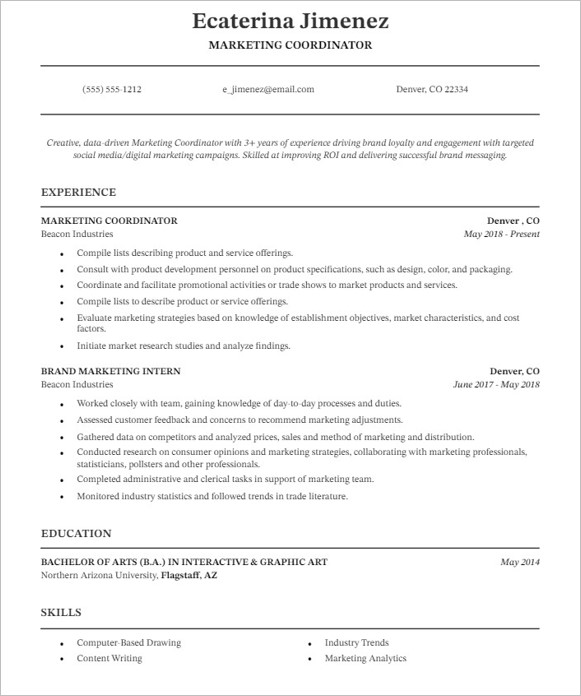 The word “resume” comes from the French résumer, which means “to summarize.” So, your resume is a written summary of your professional and educational history, and it is often the first thing a prospective employer may see of you. Similarly, “CV” stands for “Curriculum Vitae” which means “course of life” in Latin. Each one is a way of showcasing your work experience and skill set. Therefore, they must be well-written! For the remainder of this section, we will be focusing on resumes; however, all of our suggestions also apply to a CV, which mostly differs from a resume in that it can be as many pages as you like while a resume should be 1-2 pages long.
The word “resume” comes from the French résumer, which means “to summarize.” So, your resume is a written summary of your professional and educational history, and it is often the first thing a prospective employer may see of you. Similarly, “CV” stands for “Curriculum Vitae” which means “course of life” in Latin. Each one is a way of showcasing your work experience and skill set. Therefore, they must be well-written! For the remainder of this section, we will be focusing on resumes; however, all of our suggestions also apply to a CV, which mostly differs from a resume in that it can be as many pages as you like while a resume should be 1-2 pages long.
Writing a resume follows a specific format, but you have a lot of choice and chance for creativity, as long as you keep things professional. For example, a resume of a graphic designer might look very different from a resume of an engineer. But each one would include the same basic things: Your personal information (name, email address, home address, and/or website,) your professional background (all the various jobs you’ve had that are relevant to the job you are applying for), and your educational background (degrees completed and the institutions you attended). How you organize this information, however, is up to you.
All resumes should contain 3 core elements:
- Content: keep it clean, lean, and appealing
- Format: showcase your accomplishments clearly
- Design: make it appropriate for your field or industry and level of experience
Below are some tips when getting ready to design or update your resume:
- Exclude personal pronouns such as “I” and “me”
- Use a businesslike tone
- Do not include a photo or list general hobbies, interests, or activities
- Do not feel you need to limit your resume to one page—this is outdated advice
- Do not list professional or personal references on your resume; these will be requested separately if you are selected as a candidate
- List your work experience chronologically with most recent position first
- Stay honest, authentic, and accurate; don’t embellish
- Quantify information when possible: include metrics and data when you can
- PROOFREAD your resume and have someone else review it as well (preferably, someone in your field)
